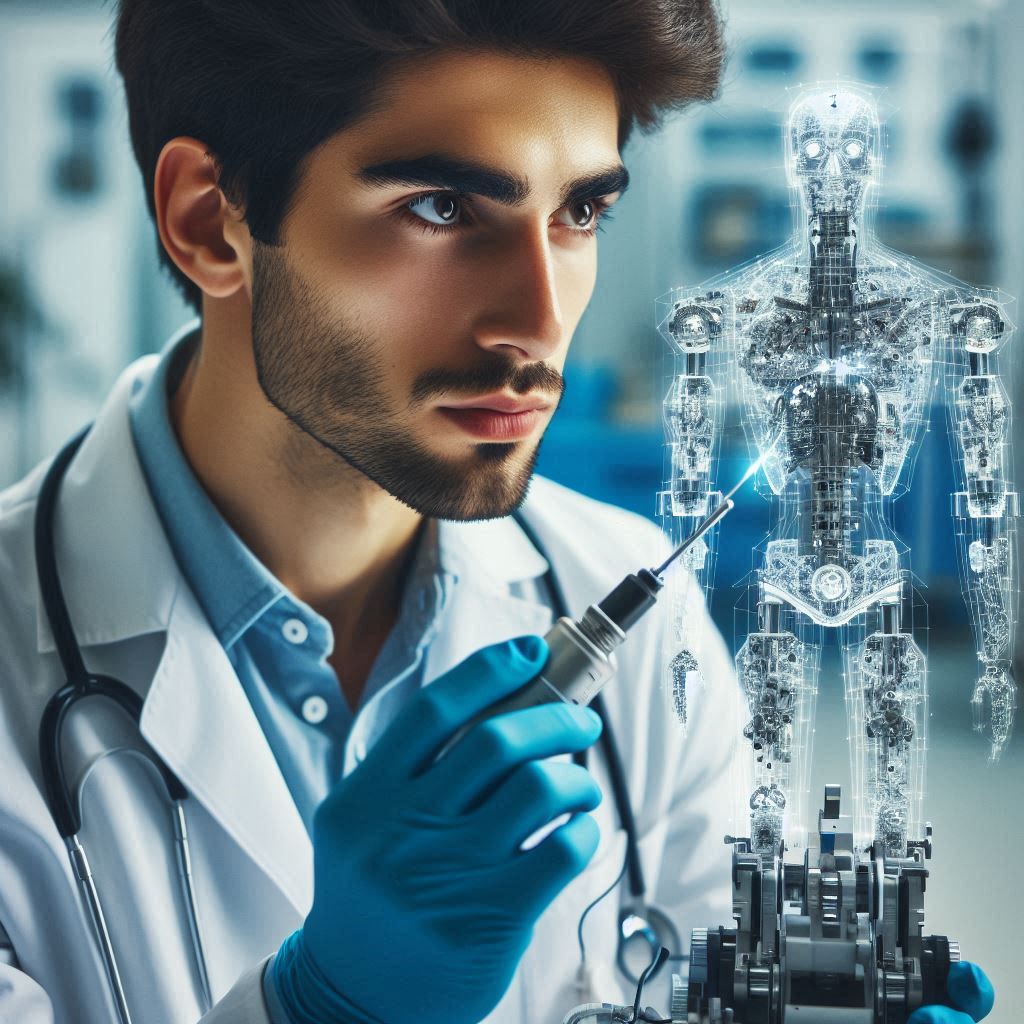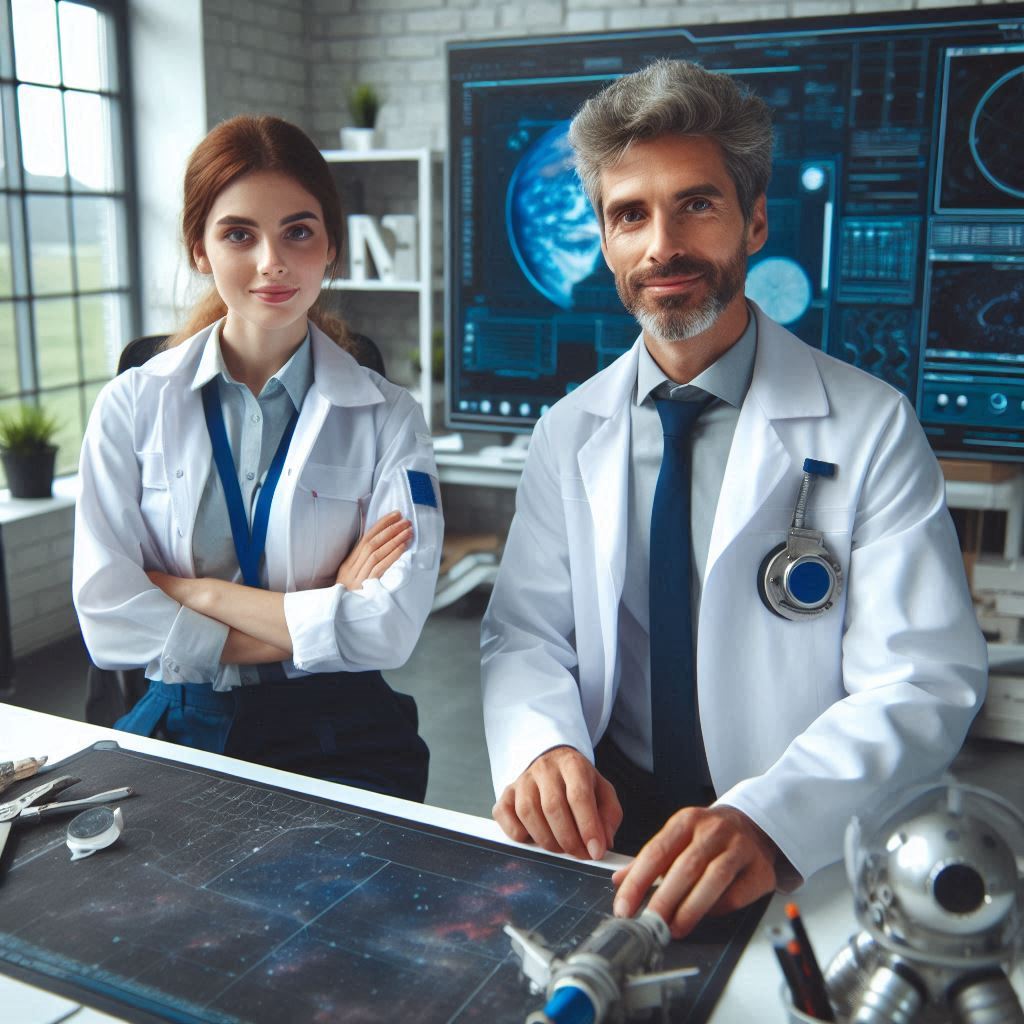Introduction
Biomedical engineering merges engineering principles with medical and biological sciences to advance healthcare technology and improve patient outcomes.
It addresses complex medical challenges by creating innovative solutions that enhance diagnosis, treatment, and rehabilitation.
One crucial aspect of biomedical engineering is biomechanics, which plays a vital role in understanding and improving human movement and function.
Biomechanics focuses on the mechanical principles governing biological systems, including the analysis of forces and motions within the human body.
It studies how bones, muscles, tendons, and ligaments interact to produce movement, maintain stability, and respond to various stresses.
By applying principles from physics and engineering, biomechanics provides valuable insights into how biological tissues react to mechanical forces.
In biomedical engineering, biomechanics significantly impacts the development of medical devices and therapies.
It is essential for designing prosthetics that mimic natural limb movement.
Creating orthotic supports for individuals with injuries or disabilities, and developing rehabilitation tools that facilitate recovery.
Understanding biomechanics enables engineers to design more effective and comfortable solutions.
Ultimately enhancing patients’ mobility, reducing pain, and improving their overall quality of life.
By integrating biomechanics into their work, biomedical engineers can drive innovation and advance medical care.
Overview of Biomechanics
Biomechanics is the study of the mechanical aspects of living organisms, including humans.
It involves analyzing how biological systems move, interact, and respond to external forces.
Define Biomechanics
Biomechanics is the study of the mechanical principles that govern the human body’s movement.
It combines concepts from physics, engineering, and biology to understand how forces interact with biological systems.
This field analyzes how muscles, bones, and joints work together to produce motion.
How Biomechanics Is Applied in Biomedical Engineering
In biomedical engineering, biomechanics is crucial for designing and improving medical devices and treatments.
Engineers use biomechanics to develop prosthetics, orthotics, and rehabilitation equipment.
By understanding how forces affect the body, they create devices that enhance function and reduce discomfort.
Motion Analysis
Motion analysis involves studying how the body moves during various activities.
Biomedical engineers use motion capture technology to record and analyze movements.
This data helps in designing better rehabilitation protocols and improving athletic performance.
For example, engineers analyze gait patterns to develop customized prosthetic limbs.
Force Analysis
Force analysis examines how forces are distributed across the body and its components.
Engineers study the forces exerted on bones and joints to design supportive devices.
For instance, they use force analysis to develop orthopedic implants that withstand the stresses of daily activities.
This analysis ensures that implants function effectively and reduce the risk of complications.
Material Properties
Material properties are essential in biomechanics, as they determine how materials used in medical devices perform under different conditions.
Biomedical engineers select materials with suitable strength, flexibility, and durability for implants and prosthetics.
They test materials to ensure they mimic the properties of natural tissues, improving device compatibility and longevity.
Engineers also consider how materials interact with biological tissues.
Biocompatibility is a key factor, ensuring that materials do not cause adverse reactions.
For example, engineers use titanium and specialized polymers for implants because these materials are well-tolerated by the body and integrate effectively with bone and tissue.
Applications in Medical Devices and Treatments
Biomechanics influences various medical devices and treatments.
In orthopedics, it aids in designing joint replacements and spinal implants that match the mechanical properties of natural bones.
In rehabilitation, biomechanics helps create exoskeletons and assistive devices that support movement and recovery.
- Prosthetics: Engineers use biomechanics to design prosthetic limbs that mimic natural movement, providing users with better mobility and comfort. Motion and force analysis help create prosthetics that are both functional and ergonomic.
- Rehabilitation Equipment: Biomechanics informs the development of equipment like robotic exoskeletons and physical therapy devices. These tools support patients in regaining strength and mobility after injury or surgery.
Biomechanics is a fundamental aspect of biomedical engineering, influencing the design and effectiveness of medical devices.
By studying motion, force, and material properties, engineers create solutions that improve patient outcomes and enhance quality of life.
As biomechanics continues to advance, it will drive innovations in medical technology and treatments, benefiting patients worldwide.
Applications of Biomechanics in Biomedical Engineering
Using Biomechanics in the Design of Medical Devices
Biomechanics is crucial in designing medical devices that interact effectively with the human body.
Engineers use biomechanics to create devices that mimic or support natural movements.
For example, biomechanics informs the design of prosthetics to ensure they align with the user’s gait and movements.
In developing joint replacements, biomechanics helps engineers understand the forces and stresses on artificial joints.
This knowledge ensures that implants are durable and function properly within the body.
By simulating body movements, engineers can optimize the design for comfort and performance.
Biomechanics also plays a role in designing orthotic devices, such as braces and supports.
These devices assist in realigning or stabilizing body parts, improving functionality and reducing pain.
Engineers use biomechanical principles to ensure that these devices provide the correct amount of support without causing additional strain.
Biomechanics in Understanding Human Movement and Rehabilitation
Biomechanics helps in understanding human movement, which is essential for effective rehabilitation strategies.
By analyzing how the body moves, engineers and therapists can identify abnormalities or inefficiencies.
This understanding allows for the development of targeted rehabilitation programs that address specific movement issues.
In rehabilitation, biomechanics assists in designing exercises and therapies that improve strength, flexibility, and coordination.
By using motion analysis technology, therapists can monitor progress and adjust treatment plans based on biomechanical data.
This personalized approach enhances recovery and helps patients regain normal function.
Biomechanics also contributes to designing rehabilitation equipment, such as treadmills or stationary bikes.
Engineers use biomechanical data to ensure that these devices support proper movement patterns and provide effective rehabilitation.
Customized equipment based on biomechanical principles improves the efficacy of physical therapy.
Biomechanics in Tissue Engineering and Regenerative Medicine
In tissue engineering and regenerative medicine, biomechanics plays a vital role in creating functional tissue and organ replacements.
Engineers study the mechanical properties of tissues to design scaffolds that support cell growth and tissue formation.
These scaffolds must mimic the natural environment to promote successful tissue regeneration.
Biomechanics helps in developing tissue constructs that replicate the mechanical functions of natural tissues.
For example, engineers design artificial cartilage or bone with biomechanical properties that match those of the original tissue.
This alignment improves the integration and functionality of engineered tissues within the body.
Biomechanical principles are also applied in designing bioreactors that simulate physiological conditions for tissue growth.
These devices create environments that mimic the mechanical stresses and strains experienced by tissues in the body.
By replicating these conditions, engineers enhance the quality and functionality of tissue engineering products.
Biomechanics is integral to several aspects of biomedical engineering.
From designing medical devices to understanding human movement and advancing tissue engineering.
By applying biomechanical principles, engineers create devices that support natural body functions.
Improve rehabilitation strategies, and contribute to innovative tissue engineering solutions.
The use of biomechanics in these areas enhances the effectiveness of medical treatments and devices.
Leading to better patient outcomes and improved quality of life.
As technology and research continue to advance, biomechanics will remain a cornerstone in the development of cutting-edge biomedical solutions.
Read: The Role of NCARB in US Architecture Licensing.
Importance of Biomechanics in Healthcare
The Significance of Biomechanics in Improving Medical Treatments and Procedures
Biomechanics plays a crucial role in enhancing medical treatments and procedures. It involves the study of forces and movements in the human body.
By understanding these forces, engineers can design better medical devices and improve surgical techniques.
For instance, biomechanical analysis helps in designing implants and prosthetics that mimic natural body movements, improving their functionality and comfort.
In surgery, biomechanical principles aid in developing minimally invasive techniques.
These techniques reduce tissue damage and accelerate recovery times.
For example, laparoscopic surgery uses precise movements guided by biomechanical insights, leading to smaller incisions and quicker healing.
How Biomechanical Principles Contribute to Personalized Medicine
Biomechanical principles are central to personalized medicine.
By analyzing individual biomechanical data, healthcare providers can tailor treatments to specific patient needs.
This personalization is evident in the design of custom orthotics and prosthetics.
Biomechanical assessments ensure that these devices fit properly and function effectively for each individual.
In rehabilitation, biomechanics helps in creating personalized exercise programs.
By understanding a patient’s unique movement patterns and physical limitations, therapists can design targeted exercises.
This tailored approach enhances recovery and reduces the risk of injury, leading to more effective rehabilitation outcomes.
The Impact of Biomechanics on Patient Outcomes and Quality of Life
Biomechanics has a profound impact on patient outcomes and quality of life.
Improved medical devices, such as joint replacements and prosthetics, enhance mobility and comfort.
Patients experience less pain and greater ease in performing daily activities.
For example, advanced prosthetics with biomechanical design provide a more natural range of motion.
Allowing users to engage in activities they previously could not.
In orthopedic treatments, biomechanical principles contribute to better outcomes.
Devices designed with biomechanical insights reduce the risk of complications and improve healing.
Biomechanically optimized surgical techniques minimize postoperative pain and shorten recovery times, enhancing the overall patient experience.
Additionally, personalized biomechanical assessments in sports medicine lead to better performance and injury prevention.
Athletes benefit from custom-fitted gear and personalized training programs that optimize their biomechanics.
This tailored approach not only improves athletic performance but also reduces the risk of injury, contributing to a higher quality of life.
Integration of Biomechanics in Healthcare
The integration of biomechanics into healthcare practices leads to more effective treatments and improved patient satisfaction.
By incorporating biomechanical data into the design of medical devices and treatment plans, healthcare providers can offer more precise and personalized care.
Furthermore, ongoing research in biomechanics continues to drive innovations in medical technology.
Advances in biomechanics lead to the development of new devices and techniques that further enhance patient care and outcomes.
Biomechanics significantly improves medical treatments and procedures by enhancing device design and surgical techniques.
It contributes to personalized medicine by tailoring treatments to individual needs and has a positive impact on patient outcomes and quality of life.
The continued integration of biomechanics into healthcare practices promises further advancements in patient care and overall well-being.
Transform Your Career Today
Unlock a personalized career strategy that drives real results. Get tailored advice and a roadmap designed just for you.
Start NowRead: 5 Essential Software Tools Every US Architect Uses.
Current Trends in Biomechanics Research
Biomechanics is a rapidly evolving field, with recent advancements pushing the boundaries of technology and methodologies.
Researchers are constantly exploring new areas of biomechanics research to improve understanding of how the body moves and functions.
Recent Advancements in Biomechanics Technology and Methodologies
Biomechanics technology has advanced rapidly, introducing innovative methodologies that enhance our understanding and application of mechanical principles in medicine.
Recent advancements include sophisticated motion capture systems, advanced materials for implants, and improved computational tools.
These technologies offer deeper insights into how the body moves and how forces affect it.
Modern motion capture systems use high-resolution cameras and sensors to analyze body movements with incredible precision.
These systems are now capable of capturing complex motions in three dimensions, providing detailed data for designing better prosthetics and rehabilitation tools.
Advanced materials have transformed implant technology.
Biomechanics research has led to the development of materials with enhanced strength, flexibility, and biocompatibility.
Innovations like 3D-printed implants and bioengineered tissues offer tailored solutions for individual patients, improving treatment outcomes.
Computational tools have also progressed. Enhanced algorithms and software enable more accurate simulations of biomechanical systems.
These tools help engineers predict how devices will perform under various conditions, reducing the need for extensive physical testing.
Emerging Areas of Research in Biomechanics
Several emerging areas in biomechanics research hold promise for future advancements. Computational modeling and wearable sensors are two key areas driving innovation in the field.
- Computational Modeling: Computational modeling uses mathematical models to simulate and analyze biomechanical systems. Researchers are developing more complex models that account for various factors, such as tissue interactions and dynamic forces. These models help in designing more effective medical devices and predicting patient outcomes with greater accuracy.
- Wearable Sensors: Wearable sensors are becoming increasingly sophisticated. These sensors can monitor a range of physiological parameters, such as joint angles, muscle activity, and gait patterns. They provide real-time feedback to users and healthcare providers, aiding in personalized rehabilitation and performance optimization.
Wearable sensors also contribute to remote monitoring of chronic conditions.
Patients with conditions like arthritis or Parkinson’s disease can use these sensors to track their symptoms and progress.
Allowing for more responsive and tailored treatment plans.
Potential Future Applications of Biomechanics in Healthcare
The future applications of biomechanics in healthcare are vast and exciting.
As technology continues to evolve, biomechanics will play a crucial role in several areas:
- Personalized Medicine: Advances in biomechanics will enable more personalized treatment plans. By analyzing individual biomechanics, healthcare providers can tailor interventions and devices to each patient’s unique needs.
- Robotic Surgery: Robotics will become increasingly integrated with biomechanics, enhancing the precision and effectiveness of surgical procedures. Future robotic systems may offer even greater dexterity and control, reducing recovery times and improving outcomes.
- Rehabilitation Technologies: Innovations in biomechanics will lead to more advanced rehabilitation technologies. Devices that incorporate real-time feedback and adaptive algorithms will provide more effective support for patients recovering from injuries or surgeries.
- Injury Prevention: Biomechanics will contribute to better injury prevention strategies. By understanding how forces interact with the body, engineers can design equipment and interventions that reduce the risk of injuries in athletes and other populations.
Recent advancements in biomechanics technology have revolutionized our understanding and application of mechanical principles in medicine.
Emerging areas like computational modeling and wearable sensors are pushing the boundaries of what’s possible.
As biomechanics continues to evolve, it will drive future innovations in personalized medicine, robotic surgery, rehabilitation.
Injury prevention, ultimately enhancing healthcare and improving patient outcomes.
Read: Comparison: Architecture Styles across American Regions.

Challenges and Limitations in Biomechanics
As with any field of study, biomechanics has its own set of challenges and limitations that must be addressed in order to further its development and application in clinical practice.
Barriers to Implementing Biomechanics Solutions in Clinical Practice
Implementing biomechanics solutions in clinical practice faces several barriers.
One major challenge is the high cost of advanced biomechanical technologies.
These technologies, including sophisticated motion analysis systems and custom-designed devices, often require substantial financial investment.
This cost can be a significant hurdle for healthcare facilities, especially those with limited budgets.
Another barrier is the integration of biomechanical solutions into existing clinical workflows.
Adapting to new technologies requires changes in practice and training for healthcare professionals.
Ensuring that staff are adequately trained and that new systems integrate smoothly with current practices can be a complex and time-consuming process.
Moreover, the lack of standardized protocols for using biomechanical solutions can hinder their adoption.
Different facilities might use varying methods and equipment, leading to inconsistencies in how biomechanics are applied in patient care.
Establishing standardized guidelines and practices is essential for broader implementation.
Ethical Considerations Related to Biomechanics Research and Development
Ethical considerations are crucial in biomechanics research and development.
One primary concern is ensuring informed consent when using patients in biomechanical studies.
Researchers must provide clear information about the study’s purpose, procedures, and potential risks to participants, ensuring they understand and agree to participate voluntarily.
Privacy and data security are also critical ethical issues.
Biomechanical research often involves collecting sensitive patient data, including motion and physiological information.
Researchers must implement strict measures to protect this data from unauthorized access and ensure it is used responsibly.
Additionally, ethical concerns arise regarding the potential misuse of biomechanical technologies.
For instance, there are risks of technologies being used in ways that could negatively impact patients’ health or privacy.
Ethical guidelines and oversight are necessary to prevent such misuse and ensure that biomechanical innovations benefit patients without causing harm.
Accuracy and Reliability of Biomechanical Models and Data
The accuracy and reliability of biomechanical models and data are essential for effective application in clinical settings.
One concern is the potential for errors in biomechanical measurements.
Variability in data collection methods, equipment calibration, and analysis techniques can affect the accuracy of results.
Another issue is the generalizability of biomechanical models.
Models developed for specific populations or conditions may not be applicable to other groups, limiting their effectiveness.
Researchers must validate models across diverse populations to ensure their reliability and applicability.
Furthermore, the complexity of biomechanical systems can lead to challenges in interpreting data.
Biomechanical models often involve multiple variables and interactions, making it difficult to isolate and understand specific factors.
Ensuring that models are robust and data is accurately interpreted is crucial for effective clinical application.
Implementing biomechanics solutions in clinical practice faces challenges related to cost, integration, and standardization.
Ethical considerations, including informed consent, data privacy, and misuse, are vital in biomechanics research.
Ensuring the accuracy and reliability of biomechanical models and data is crucial for effective clinical use.
Addressing these barriers and concerns requires ongoing research, development, and dialogue among researchers, clinicians, and policymakers.
By overcoming these challenges, the field of biomechanics can continue to advance, providing valuable tools and insights that improve patient care and outcomes.
Read: Exploring Architect Salary Trends: USA Analysis.
Case Studies in Biomechanics
Examples of Successful Applications of Biomechanics in Biomedical Engineering
Biomechanics has led to several groundbreaking applications in biomedical engineering.
One prominent example is the development of advanced prosthetics.
Companies like Össur have created prosthetic limbs with biomechanical design principles.
These prosthetics offer enhanced functionality and comfort by mimicking natural limb movements.
Users experience improved mobility and a higher quality of life.
Another successful application is the design of custom orthotics for managing foot and gait issues.
The work by companies such as Align Footwear utilizes biomechanical assessments to create custom-fitted orthotic devices.
These orthotics provide better support and alignment, reducing pain and improving overall foot function for patients.
In orthopedic surgery, biomechanical principles have led to the advancement of joint replacement technologies.
For instance, the development of hip and knee implants by companies like DePuy Synthes incorporates biomechanical insights to enhance implant durability and functionality.
These implants improve patient outcomes by reducing the risk of complications and enhancing joint performance.
Specific Projects and Studies Demonstrating the Impact of Biomechanics
A notable study is the research on the biomechanics of knee implants by the Mayo Clinic.
This research focused on optimizing implant design to reduce wear and improve knee function.
The study demonstrated that biomechanically optimized implants led to better joint stability and longer-lasting results, benefiting patients with osteoarthritis.
Another impactful project is the use of biomechanical analysis in sports medicine, particularly in the development of personalized training programs.
Research conducted by the Gait and Motion Analysis Laboratory at the University of California, San Diego, used biomechanical assessments to tailor training regimens for athletes.
This approach improved performance and reduced injury rates, showcasing the benefits of personalized biomechanics in sports.
Lessons Learned from Case Studies
One key lesson from these case studies is the importance of integrating biomechanics into the design process.
For prosthetics and implants, understanding the mechanical forces at play leads to better performance and patient satisfaction.
Customization based on biomechanical data ensures that medical devices meet individual needs more effectively.
Another lesson is the value of continuous research and development.
The advancements in biomechanical design for implants and orthotics result from ongoing studies and refinements.
Staying updated with the latest research helps in developing innovative solutions and improving existing technologies.
Showcase Your Business Today
Reach thousands of readers actively exploring professional services. Publish your business profile and grow your audience now.
Publish NowPotential Areas for Future Research
Future research in biomechanics could focus on enhancing the integration of biomechanics with emerging technologies.
For example, combining biomechanics with artificial intelligence could lead to more precise and adaptive medical devices.
Exploring the use of biomechanics in regenerative medicine and tissue engineering may also provide new solutions for treating injuries and diseases.
Additionally, research into the biomechanics of rehabilitation can offer insights into more effective recovery strategies.
Developing biomechanical tools for early diagnosis and personalized treatment plans can further enhance patient outcomes.
Biomechanics has led to successful applications in prosthetics, orthotics, and orthopedic implants.
Studies and projects demonstrate the significant impact of biomechanics on healthcare outcomes, improving functionality and patient satisfaction.
Lessons learned emphasize the importance of integrating biomechanics into design and ongoing research.
Future research holds promise for further advancements, combining biomechanics with new technologies to enhance patient care and treatment effectiveness.
Conclusion
In this blog post, we explored the critical role of biomechanics within the field of biomedical engineering.
We defined biomechanics as the application of mechanical principles to the human body.
Focusing on how these principles influence movement, function, and injury prevention.
This exploration highlighted how biomechanics informs the design and improvement of medical devices, from prosthetics to rehabilitation tools.
Understanding biomechanics is crucial for advancing healthcare technology.
It allows engineers to develop more effective and tailored solutions for patients.
Such as customized prosthetics and orthotic devices that enhance mobility and quality of life.
These innovations not only improve patient outcomes but also contribute to more efficient and effective treatments.
As we look to the future, continued exploration and research in biomechanics hold significant promise.
Innovations in this field have the potential to revolutionize biomedical engineering, leading to groundbreaking advancements in medical technology.
We encourage readers to engage deeply with biomechanics research, invest in further studies, and collaborate with experts to drive progress.
By doing so, we can unlock new possibilities for improving patient care and revolutionizing the field of biomedical engineering.
[E-Books for Sale]
The Big Book of 500 High-Paying Jobs in America: Unlock Your Earning Potential
$19.99 • 500 High-Paying Jobs • 330 pages
Explore 500 high-paying jobs in America and learn how to boost your career, earn more, and achieve success!
See All 500 High-Paying Jobs of this E-Book
1001 Professions Without a Degree: High-Paying American Jobs You Can Start Now
$19.99 • 1001 Professions Without a Degree • 174 pages
Discover 1001 high-paying jobs without a degree! Unlock career tips, skills, and success strategies for just $19.99!




